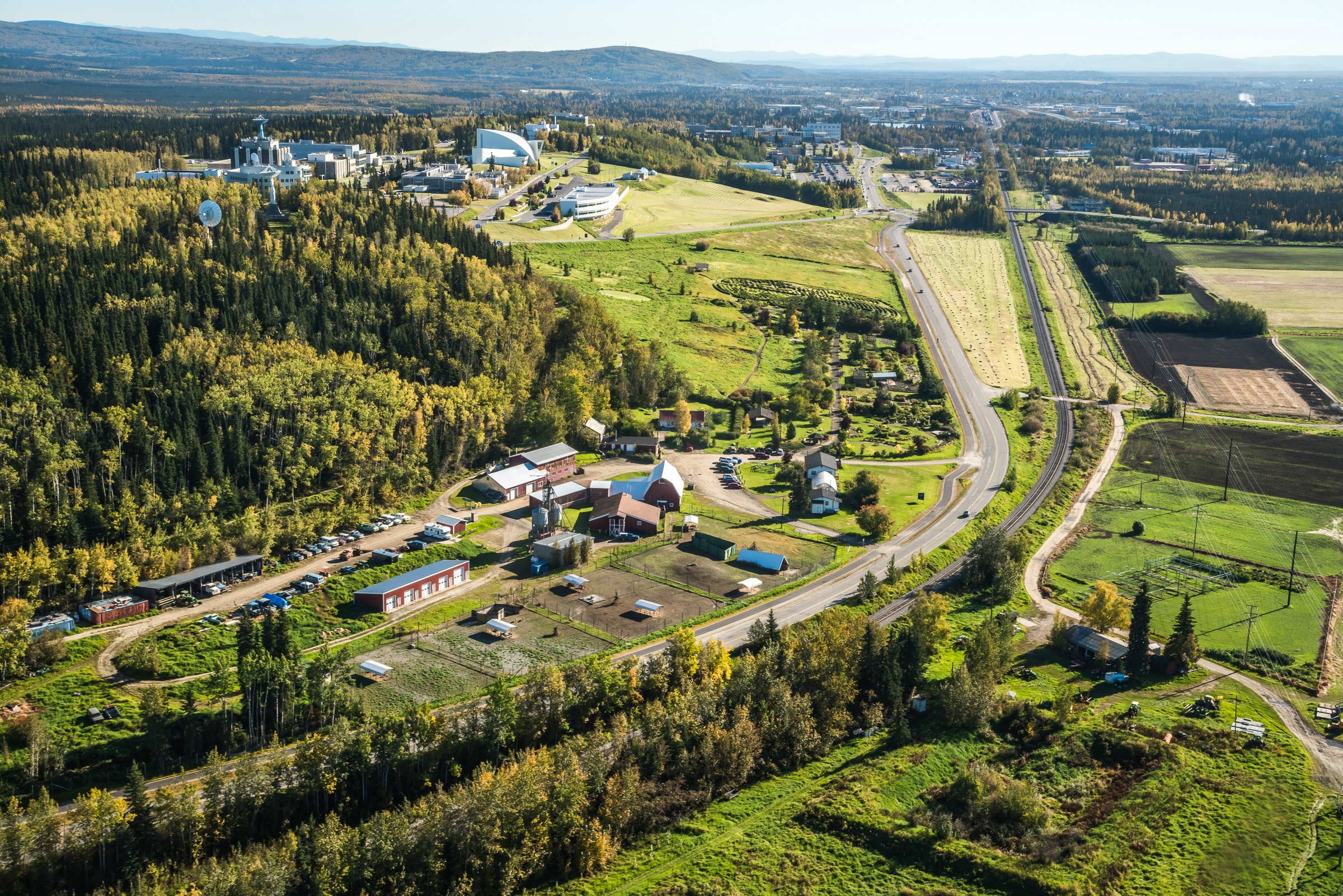
Fairbanks Experiment Farm
The Fairbanks Experiment Farm was established in 1906 by the United States Department of Agriculture (USDA) as an Agricultural Experiment Station to conduct research and promote agriculture in Interior Alaska. In 1931, it was transferred to the University of Alaska for use as an agricultural experiment station comparable to those at other land-grant universities.
The current farm includes 260 acres of cropland and 50 acres of forestland. The farm’s croplands are home to research projects where scientists investigate crops and cultivars for regional growers, test grains for successful growth in the far north, measure soil health and investigate the success of genetically modified grains for use in Alaska. The barn on the Fairbanks farm is adorned with quilt art as part of the Far North Quilt Art Project.
The Georgeson Botanical Garden is also located on the farm. A nationally recognized botanical garden known for its abundance of herbs, ornamental trees, vegetables and flowers that flourish within 100 miles of the Arctic Circle, the garden is the farthest-north botanical garden. Georgeson is well-known for its work with peonies—which bloom in June and July—as well as its research, education and outreach about high-latitude horticulture.
History
- 1906: Established by the United States Department of Agriculture (USDA) as an Agricultural Experiment Station to conduct research and promote agriculture in Interior Alaska
- 1922: University of Alaska opened on a site adjacent to the USDA Experiment Station
- 1931: USDA Experiment Station was transferred to the University of Alaska for use as an agricultural experiment station comparable to those at other land-grant universities
